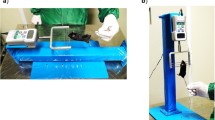Abstract
The effects of various centrally acting drugs and some peripherally acting agents on the forelimb grip strength of CD-1 mice were explored. Forelimb grip strength was assessed by use of a strain gauge to measure the lateral pull force, in grams, exerted by mice as an index of muscle relaxation. The muscle relaxants, diazepam, midazolam, baclofen, methocarbamol, dantrolene sodium and the neuromuscular blocking agents, succinylcholine and pancuronium bromide, dose-dependently reduced forelimb grip strength. 2-Amino-7-phosphonoheptanoic acid (AP7), which has also been shown to have muscle relaxant effects, also reduced grip strength. Pentobarbital, ethanol, phencyclidine, ketamine and chlorpromazine reduced grip strength at doses which produced behavioral impairments. Lithium chloride, a toxic compound used to induce taste aversions, and clonidine, at doses which affect blood pressure, body temperature and locomotor activity, did not affect grip strength. In addition, stimulant doses of amphetamine and caffeine, but not of morphine, increased grip strength in a dose-dependent manner. These results extend previous findings and suggest that this forelimb grip strength procedure may be a useful screening test for the identification of the potential muscle relaxant properties of drugs.
Similar content being viewed by others
References
Coughenour LL, McLean JR, Parker RB (1977) A new device for the rapid measurement of impaired motor function in mice. Pharmacol Biochem Behav 6:351–353
Delini-Stula A, Baumann P, Buch O (1979) Depression of exploratory activity by clonidine in rats as a model for the detection of relative pre- and postsynaptic central noradrenergic receptor selectivity of alpha-adrenolytic drugs. Naunyn-Schmiedeberg's Arch Pharmacol 307:115–122
Dunham NW, Miya TS (1957) A note on a simple apparatus for detecting neurological deficit in rats and mice. J Am Pharm Assoc 46:208–209
Ellis KO, Carpenter JF (1974) A comparative study of dantrolene sodium and other skeletal muscle relaxants with the Straub tail mouse. Neuropharmacology 13:211–214
Ellis KO, Castellion AW, Honkomp LJ, Wessels FL, Carpenter JF, Halliday RP (1973) Dantrolene, a direct acting skeletal muscle relaxant. J Pharm Sci 62:948–951
Gerber GJ, O'Shaughnessy D (1986) Comparison of the behavioral effects of neurotoxic and systemically toxic agents. How discriminatory are behavioral tests of neurotoxicity? Neurobehav Toxicol Teratol 8:703–710
Haggerty GC, Kurtz PJ, Armstrong RD (1986) Duration and intensity of behavioral change after sublethal exposure to soman in rats. Neurobehav Toxicol Teratol 8:695–702
Howd RA, Rebert CS, Dickinson J, Pryor GT, (1983) A comparison of the rates of development of functional hexane neuropathy in weanling and young adult rats. Neurobehav Toxicol Teratol 5:63–68
Ingram DK, Reynolds MA (1986) Assessing the predictive validity of psychomotor tests as measures of biological age. Exp Ageing Res 3:155–162
Kuschinsky K, Hornykiewicz O (1974) Effects of morphine on striatal dopamine metabolism: possible mechanism of its opposite effect on locomotor activity in rats and mice. Eur J Pharmacol 26:41–50
Leszkovszky GP, Tardos L (1970) Pharmacology of a new centrally acting muscle relaxant (RJ-64). Arzneim Helforschung 20:1778–1783
McLennan PL (1981) The hypothermic effect of clonidine and other imidazolidines in relation to their ability to enter the central nervous system in mice. Eur J Pharmacol 69:477–482
Meyer OA, Tilson HA, Byrd WC, Riley MT (1979) A method for the routine assessment of fore- and hindlimb grip strength of rats and mice. Neurobehav Toxicol 1:233–236
Nachman M, Ashe JH (1973) Learned taste aversions in rats as a function of dosage, concentration, and route of administration of LiCl. Physiol Behav 10:73–78
Ozawa H, Chen C-S, Watanabe H, Uematsu T (1977) Effect of clonidine on blood pressure, heart rate and body temperature in conscious rats. Jpn J Pharmacol 27:47–54
Simiand J, Keane PE, Biziere K, Soubrie P (1989) Comparative study in mice of tetrazepam and other centrally acting skeletal muscle relaxants. Arch Int Pharmacodyn 297:272–285
Soubrie P, Simon P (1978) Comparative study of the antagonism of bemegride and picrotoxin on behavioral depressant effects of diazepam in rats and mice. Neuropharmacology 17:121–125
Tukey JW, Ciminera JL, Heyse JF (1985) Testing the statistical certainty of a response to increasing doses of a drug. Biometrics 41:295–301
Turski L, Schwarz M, Turski WA, Klockgether T, Sontag K-H, Collins JF (1985) Muscle relaxant action of excitatory amino acid antagonists. Neurosci Lett 53:321–326
Van Reizen H, Boersma L (1969) A new method for quantitative grip strength evaluation. Eur J Pharmacol 6:353–356
Author information
Authors and Affiliations
Rights and permissions
About this article
Cite this article
Nevins, M.E., Nash, S.A. & Beardsley, P.M. Quantitative grip strength assessment as a means of evaluating muscle relaxation in mice. Psychopharmacology 110, 92–96 (1993). https://doi.org/10.1007/BF02246955
Received:
Revised:
Issue Date:
DOI: https://doi.org/10.1007/BF02246955




